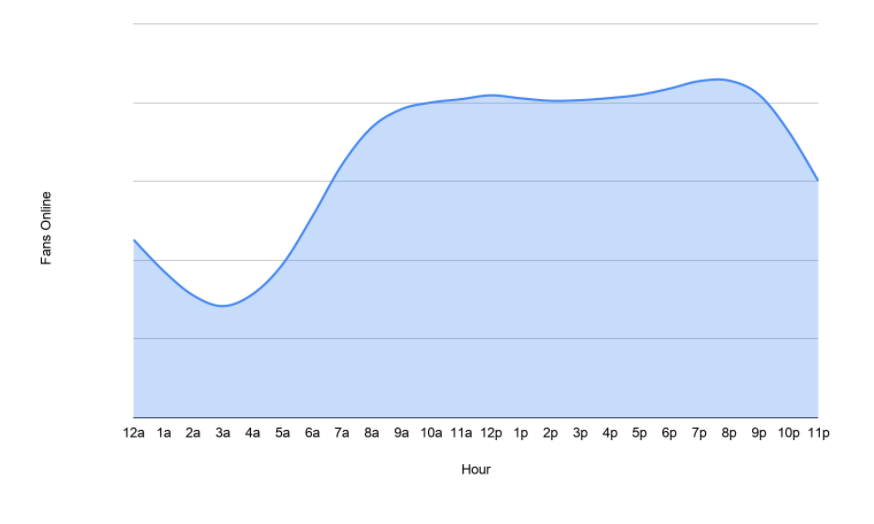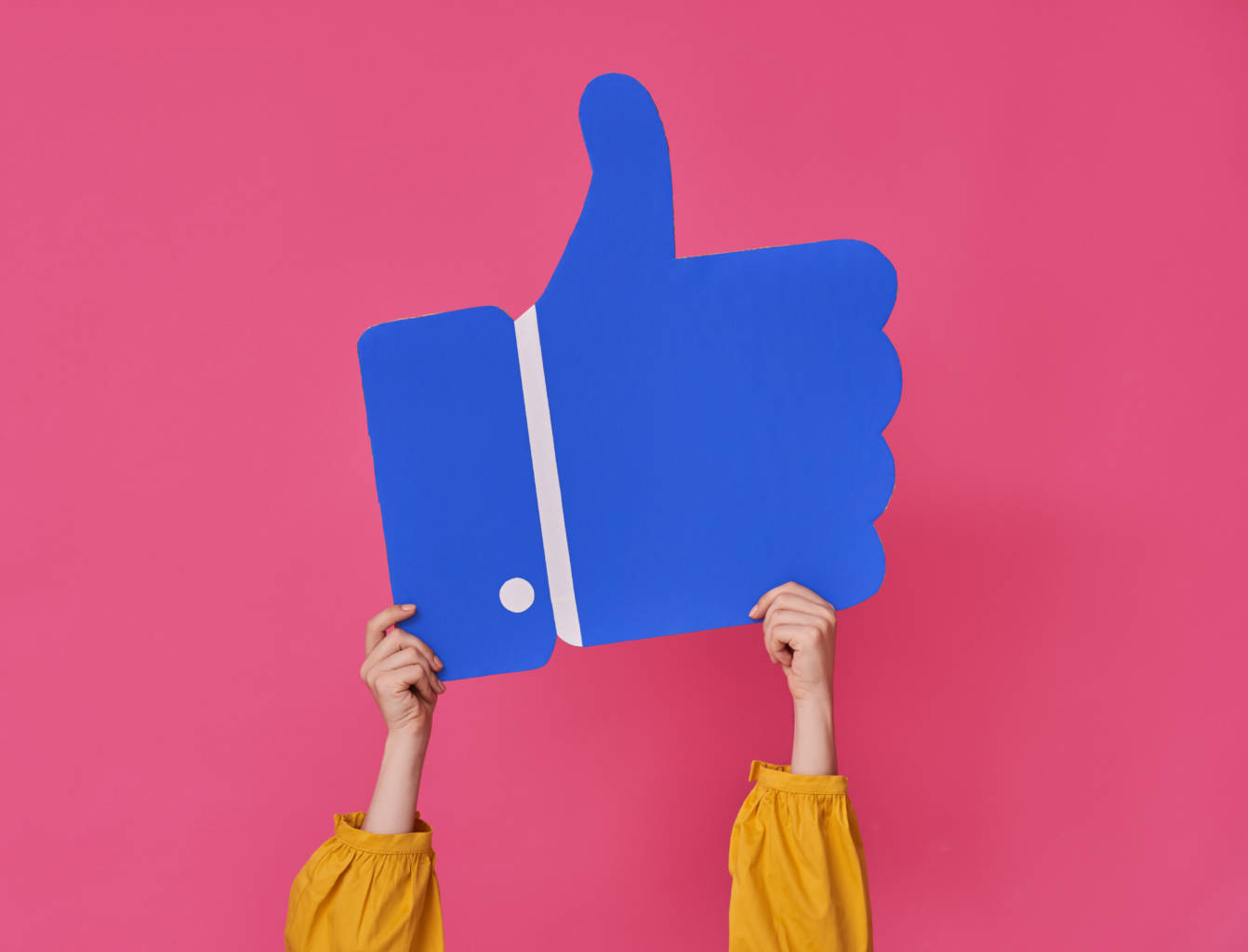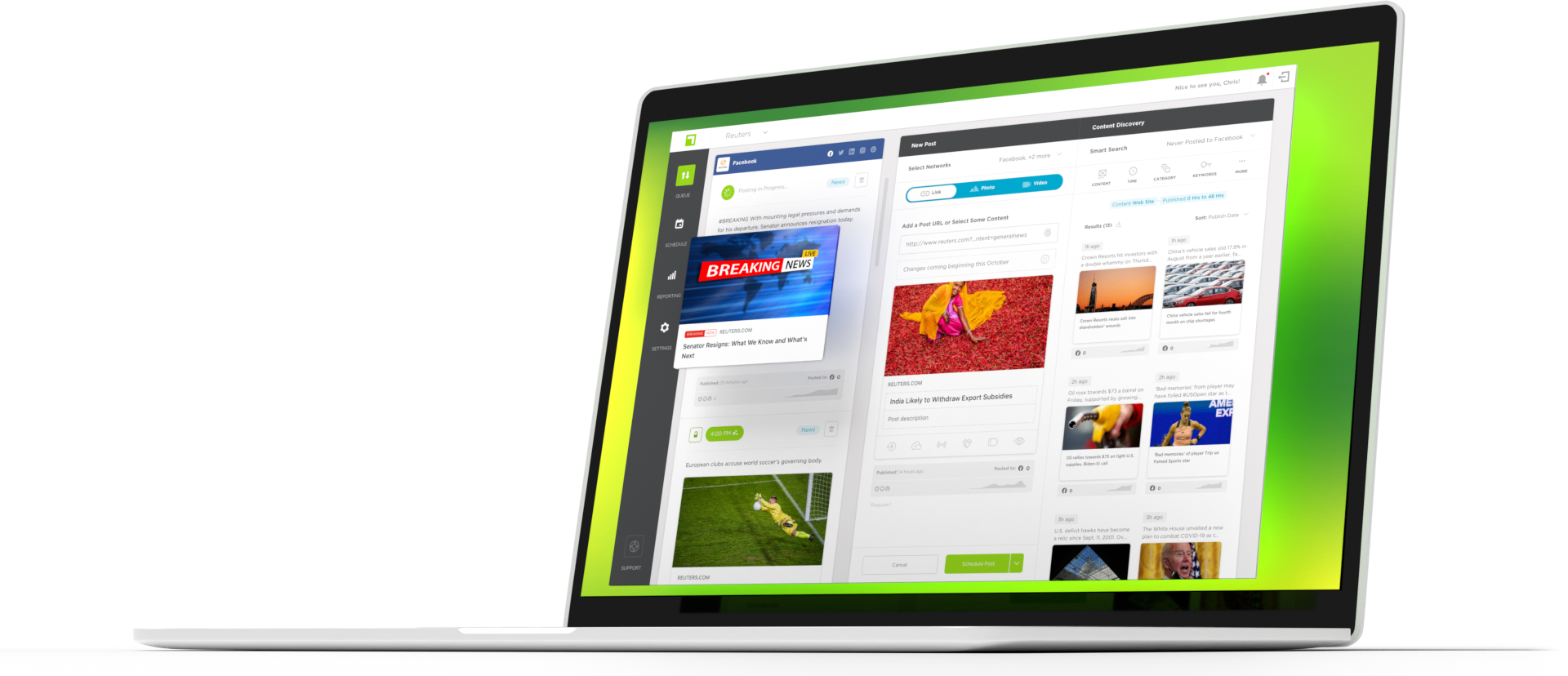As a publisher on Facebook, the game is competing for Reach in the Newsfeed and getting your content in front of as many viewers as possible. Reach is an opportunity for clicks, which is probably pretty high on your list of KPIs. So much of it is dependent on timing, which is why a Facebook frequency posting strategy matters.
But how do you do it?
Anybody who has ever worked to increase Facebook Reach knows it’s not just about how often you post—when you post and what you post are even more critical. These components can help you strike a winning balance between giving your audience too much and not enough content. Here are the factors that need consideration:
- How much new content you’re creating and how much evergreen content you have
- The Reach of your current posts
- When your audience is online and engaging with your Page
Take an inventory of the content that you have.
Taking inventory may not be as simple as it sounds, but it’s an important step. To start, evaluate how much content you consistently produce on a daily and weekly basis—weekdays and weekends. If you’re creating ten pieces of content a day, twenty Facebook slots are probably too many. If you’re producing one hundred pieces of content a day, twenty Facebook slots are probably not enough.
Also, look at the well of evergreen content that you have. Evergreen is content that has a long shelf life, which allows circulation over and over again to drive traffic. If you have years worth of evergreen content to pull from, you can probably rely on that to fill a larger number of slots. Many publishers see success with using evergreen as supplemental content when things are tight, they’re short-staffed, or to fill gaps during off-peak production hours.
How is the content that you’re creating doing?
Another part of this is knowing what your audience wants to see. One of the beautiful aspects of social media is that your readers will tell you what they want to see and engage in real time!
Take some time and look at your analytics. Some things to ask:
- Which posts get the most Reach in the Newsfeed?
- Which posts get the most referral traffic?
- Which posts got the most valuable engagement, according to your KPIs?
Know what your top performers are and look for consistent themes. You should be able to draw some valuable conclusions about what works for your audience.
Learn when your audience is online
Knowing when your Facebook followers are online and engaging with your Page throughout the day is a big deal. Many publishers aren’t even aware that they can do this, but it’s a Facebook API pull, or True Anthem can do it for you.
Once you pull this information, it’s essential to spend some time aligning your social strategy to when your audience is online (and when they aren’t). Knowing when your audience is most likely to engage with your Page is extremely important to Facebook’s success.
First, there’s a difference between your Page Likes and Followers. Essentially, your followers are people that receive updates about your Page in their News Feed. This is who we are going to talk about today. It is possible to Like a page and not follow it.
Your followers have different online behaviors throughout the days and hours of the week. When they are online, and when they engage matters very much to the success of your posts. Most US-based publishers’ have audience trends on weekdays that look like this – the Facebook whale:

The takeaway in that graph is that most publishers’ audience availability on FB typically peaks throughout the weekdays at two points: At 12 p.m. ET and again at 9 p.m. ET. And, audience availability generally is at its lowest point somewhere around 3 a.m. ET.
Understand the algorithm
Okay, maybe this isn’t entirely fair. Anyone who tells you they understand the algorithm is lying to you—the algorithm is a complicated beast that is AI-driven and constantly evolving with users. However, there are a few things that are consistent:
- The quality of your page is important. Consistency, quality, and engagement matter.
- What time you post matters. If your audience is asleep, you won’t get a lot of initial engagement, which will likely dim the post’s reach.
- Is the post likely to drive engagement? This is probably the most nebulous measure, as you can’t reliably predict something like this. However, pay attention to what has worked in the past and learn from that content.
Why the “Facebook Whale” isn’t the best metric
While it would be great if every publisher’s audience trends were the same, that isn’t the case. For example, if your audience tends to be more international or across multiple time zones, your trends may be shifted (or look entirely different) from the chart above. Accordingly, we’d recommend you pull the data yourself from Facebook’s API (or reach out to us to do it for you).
A secret many of the most successful publishers on Facebook use is to align their post schedule to audience availability. They align their post volume to the trend (or shape) of their audience on FB. It would be best if you were doing this, too. Here are some examples:

In this graph, you can see how the posting roughly follows the number of fans online – not the amount of content published. This posting method is a strategic approach to content distribution. The publisher is looking at the fans’ online data and posting to their Page accordingly.
The result is this:

You can see that their referrals are pretty consistent with the number of links that they’re posting. They’ve managed to strike the right balance, which allows them to maintain referral traffic consistent with the number of content links they are posting. You can also see that the most substantial referrals are not during the day when most people are online.
Competition in the Newsfeed
While it may make logical sense to only post during the daytime hours when audience levels are high, it just doesn’t work that way on Facebook. Why? Because that’s when everybody else is posting, too, and everybody is fighting for their share of the Facebook Reach. While your audience trends may look similar to the chart above, that means other publishers may have similar trends to you. There is no guarantee Facebook is going to show your posts to your followers. In fact, on average, a publisher reaches only 4-5 of 100 of their followers with each post, making Facebook Reach about 4%-5%.
So, figure out when your audience is online – not when Facebook’s audience is online. When your content goes up matters almost as much as what content you post. Act accordingly and be sure to alter your strategy.
Happy posting!
Contact us to learn how our automation tool can seamlessly post to your social media channels.

